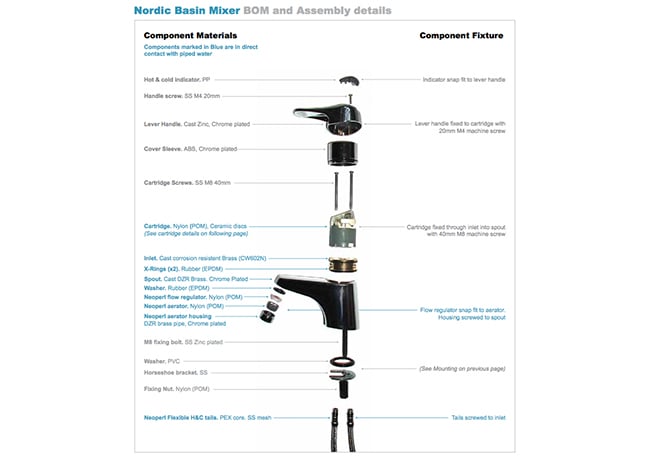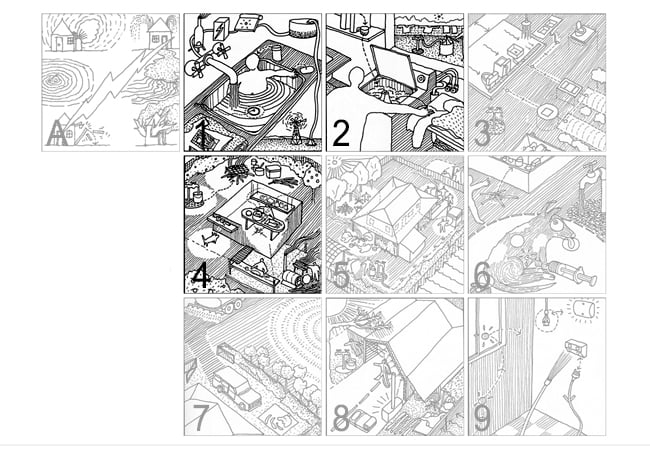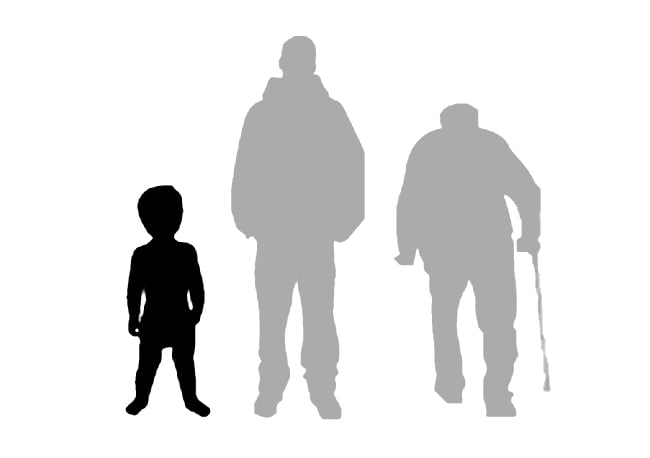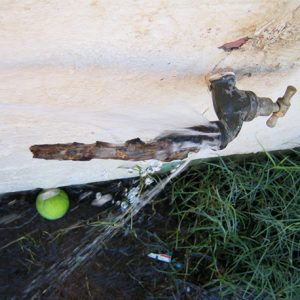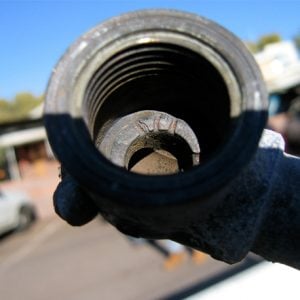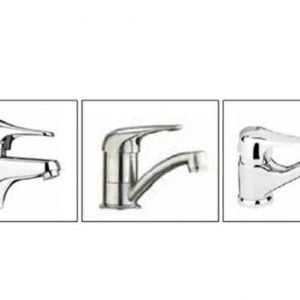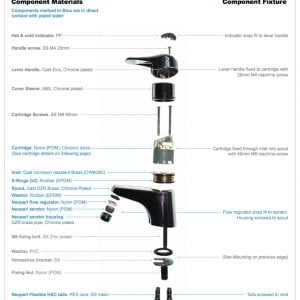Research and Development
Tap Evaluation – Finding better taps
Project Details Less wasted water and $$$
- Introduction
- The Problem
- The Solution
- Trial projects
- Where to next?
- From Housing for Health - the Guide
Introduction
Housing for Health Survey data shows that taps are not working well. Poorly performing taps impact on the ability of the householder to maintain personal hygiene and health. Washing children less than 5 years of age is the highest priority Healthy Living Practice (HLP) after Safety.
Leaking taps also lead to wasting water, extra load on waste systems, loss of hot water and the cost of heating water that is not being used.
This project aims to identify longer lasting and better quality tap ware.
The Problem
Traditional jumper valve taps are subject to washers leaking, dripping, wearing out in a short time, handles coming off, washers breaking, dezincification, corrosion, calcification and pitting of the tap seats. These are very common and very well documented tap failures.
The Solution
- To identify longer lasting and better quality tap ware. Establish performance criteria for specifying tap ware. Research existing available tap ware solutions.
- Select most suitable components and assess performance & cost data.
- Specify performance criteria for suitable products
Trial projects
Reverse engineering analysis was conducted on existing commercial flick mixer type taps based on: product assembly methods, materials used, part access and serviceability in order to obtain information and ranking about suitability of the products for intended use.
Where there is a direct and demonstrated relationship between hardware performance and health impact a more rigorous process is required in order to insure that the specified hardware stands up to the physical environmental demands placed upon it by water quality and maintenance requirements – to ensure critical healthy living practices are able to be carried out reliably and continuously. This project provides a demonstration of a product research approach to be implemented when making purchase and specification decision for remote Indigenous housing.
Recommendations
1.) Implement an ongoing product research approach and method to ensure reliable performance of hardware.
2.) Based on above investigation the recommended models in order of recommendation are:
- Nordic mixer $ 236.35 – Caroma Dorf Industries, 4 Ray Road, Epping, NSW 2121, Ph: (02) 9202 7000
- Ewing A1 + A3B mixer $ 307.25 – Ewing, 4/24 Deakin Street, Brendale, QLD 4500, Ph: (07) 3205 6099
- Hansa Polo mixer $ 318.25, – Starion Industries, 7 Eagleview Place, Eagle Farm, Qld 4009, Ph: 1800 060 875
3.) Establish and develop an ongoing relationship with manufacturers in order to improve on existing market offerings for this specific market segment.
Download the ReportWhere to next?
For information for architects, designers, students, communities, housing managers go to :
Housing for Health – the guide: B1.3 Water outlets, valves & taps
From Housing for Health - the Guide
B1.3 Water outlets, valves & taps
A house may have twenty taps or valves, including two shower taps, two basin taps, two laundry tub taps, two washing machine taps, two yard taps, a toilet cistern stop tap and cistern valve, two bath taps, two kitchen taps, a hot water system relief valve, stop valve and cold water relief valve and a main house isolation valve. If any of these taps do not work, residents will be less able to carry out the Healthy Living Practices. One dripping tap can waste up to 600 litres of water a day and hot water lost through leaking taps can increase the household energy bill. If many taps are leaking in a community water system, the water supply and waste water systems will be adversely affected.
Learn More

